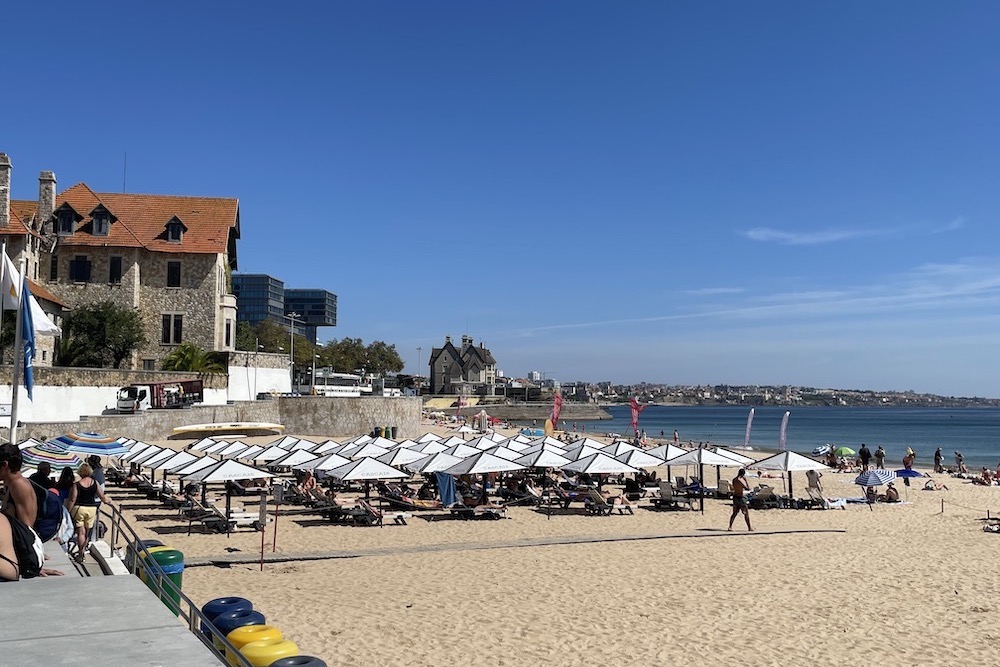I was wondering if a four-day stay in Cascais was too long. We could have spent a month there. Sometimes referred to as the Beverly Hills of Lisbon, this former fishing town on the coast of Portugal is now a thriving resort destination.
Just 15 miles west of Lisbon, Cascais has stunning beaches, 19th-century mansions, amazing seafood restaurants, fort, lighthouse and fantastic farmers market. It’s the perfect place to stay for visits to Sintra, Cabo da Roca and Sintra Cascais National Park.
Neutral during World War II, it was also a hub for spies. And the inspiration for James Bond.
Day 1: Introduction to Cascais, Portugal
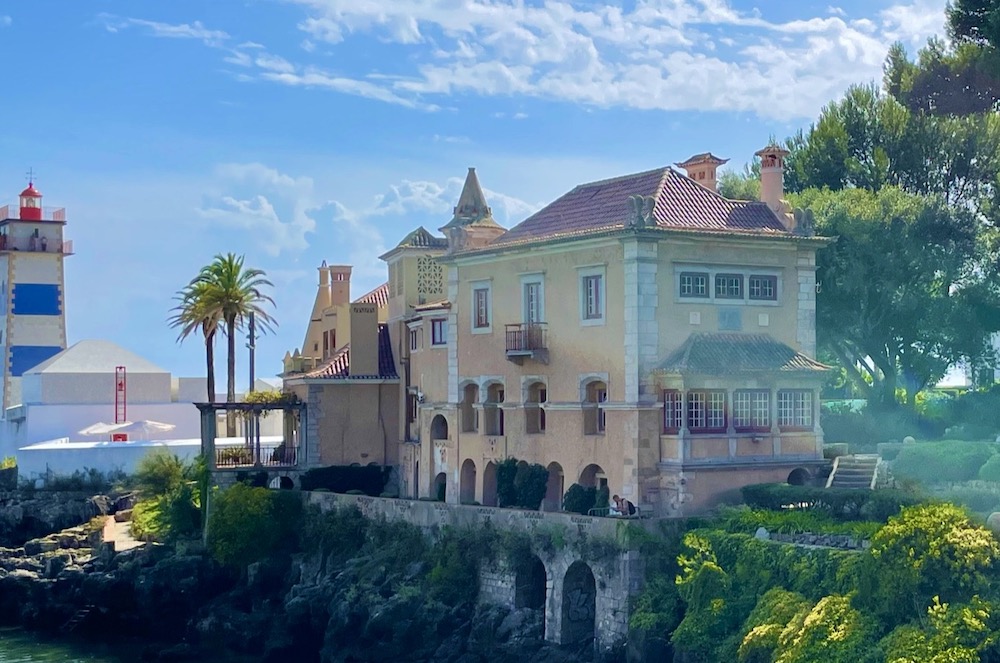
We arrived on a glorious sunny day in September and began our stay in Cascais in the best way possible – with a typical Portuguese lunch at Restaurant Taverna da Praca inside the Citadel of Cascais. We dove right into the Portuguese way of life, which includes a culture of eating and drinking.
It was the first of many, many meals that included seafood, specifically cod, the beloved national dish of Portugal. We also enjoyed a refreshing glass of white wine while seated in a quiet courtyard. We were joined by the lovely Inês Oliveira of Visit Cascais who took us on a tour after lunch to show us more of the city.
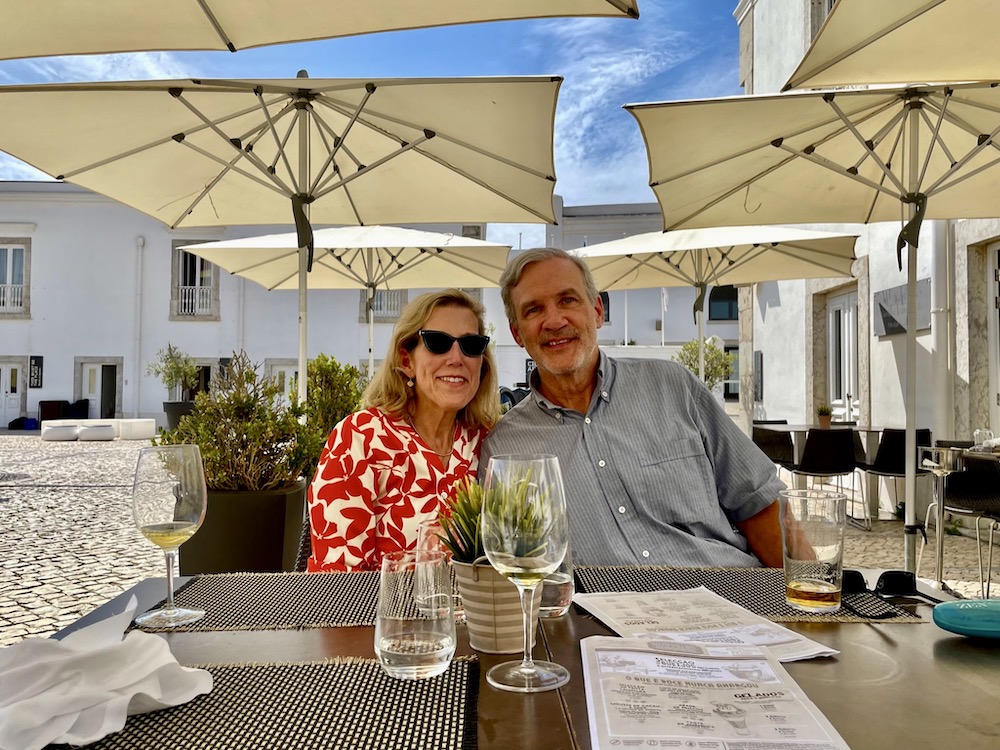
We walked around the Citadel, which was built between the 15th and 17th centuries to defend the coastline. It was once an official residence of the royal family.
Cascais, a city of around 215,000, has several beaches and we could see Praia da Ribeira, the city’s main beach, from a boardwalk outside the Citadel. It was filled with sun bathers and swimmers enjoying the hot weather.
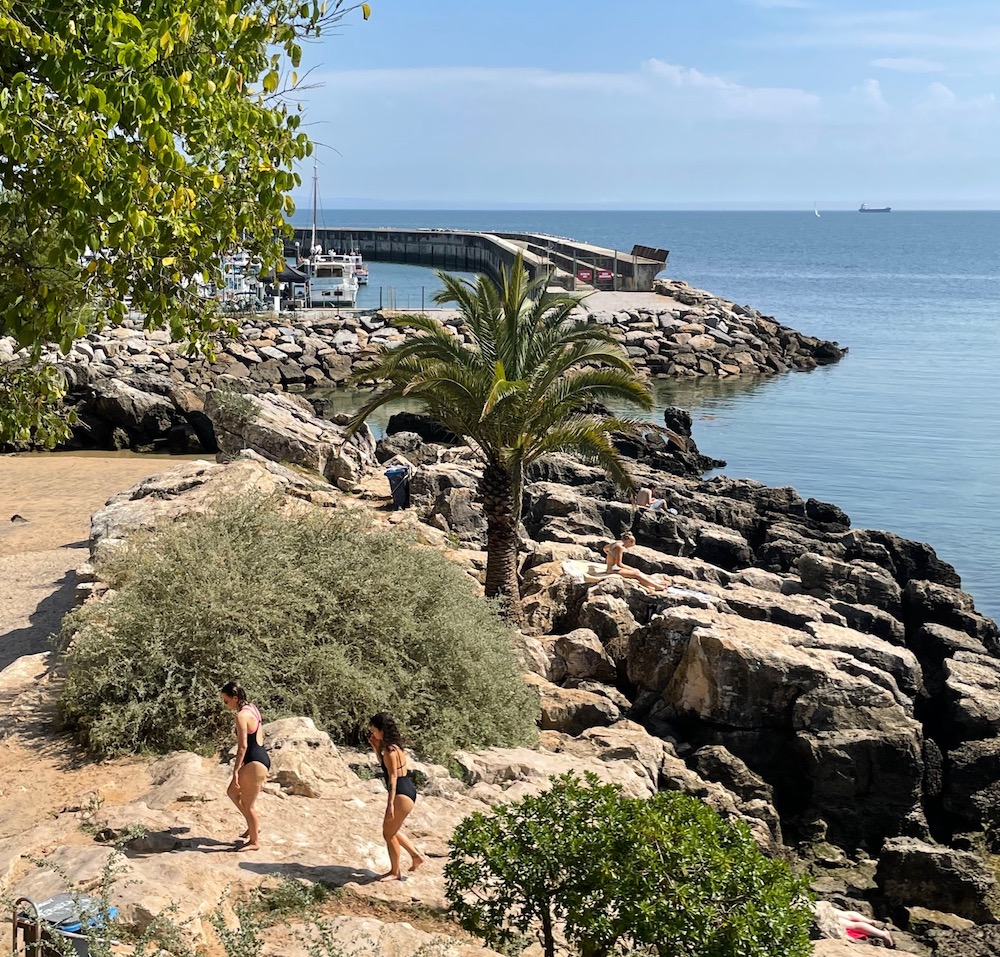
We strolled by Casa de Santa Maria, a home built in the 19th century that played hosts to many members of European royal families, including the Duke and Duchess of Windsor, who stayed here for a month in 1940. It is now open to the public.
Many wealthy people came to Cascais during World War II as Portugal remained neutral during the war. Ian Fleming was a regular visitor and stayed at the Estoril Palácio Hotel which housed Casino Estoril, the site of several spy encounters and thought to be the inspiration for him to create the character of James Bond. The hotel is featured in “On Her Majesty’s Secret Service.”
Cascais still attracts an upscale clientele and is sometimes referred to as the Beverly Hills of Lisbon.
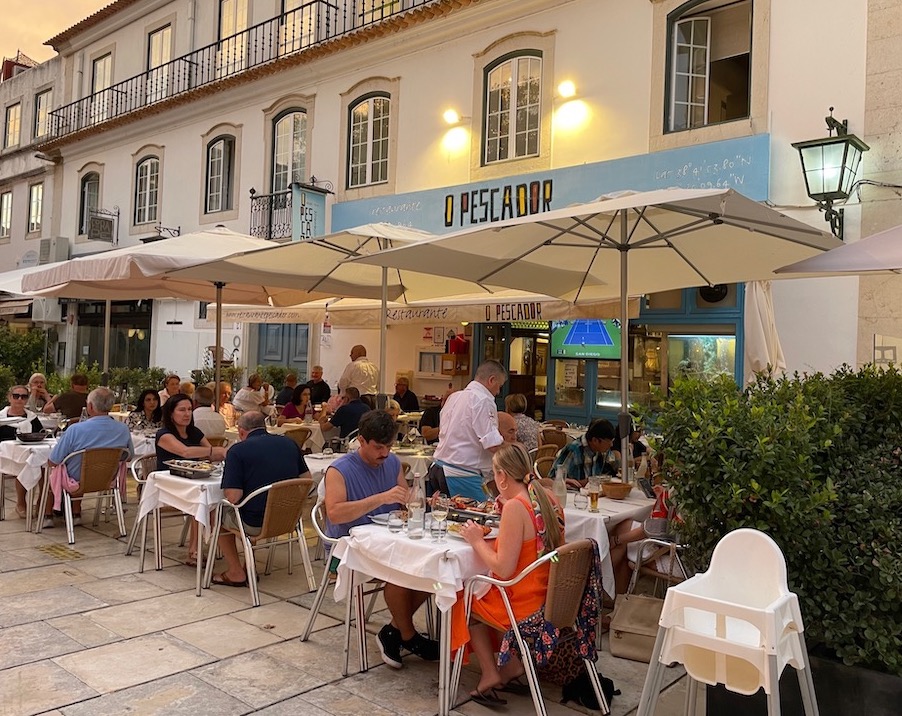
We continued our seafood feeding frenzy with dinner at O Pescador, where we sat on the patio outside by a fish tank containing giant blue lobsters about the size of a chihuahua. Opting to share a dish of paella, we were stunned when a huge copper bowl filled with seafood arrived at our table. We were told, “In Spain if you order paella you have to hunt for the seafood. In Portugal, you have to hunt for the rice.”
See our related article: 101 tips for visiting Portugal
Day 2: Castles in Sintra, Farmers Market in Cascais
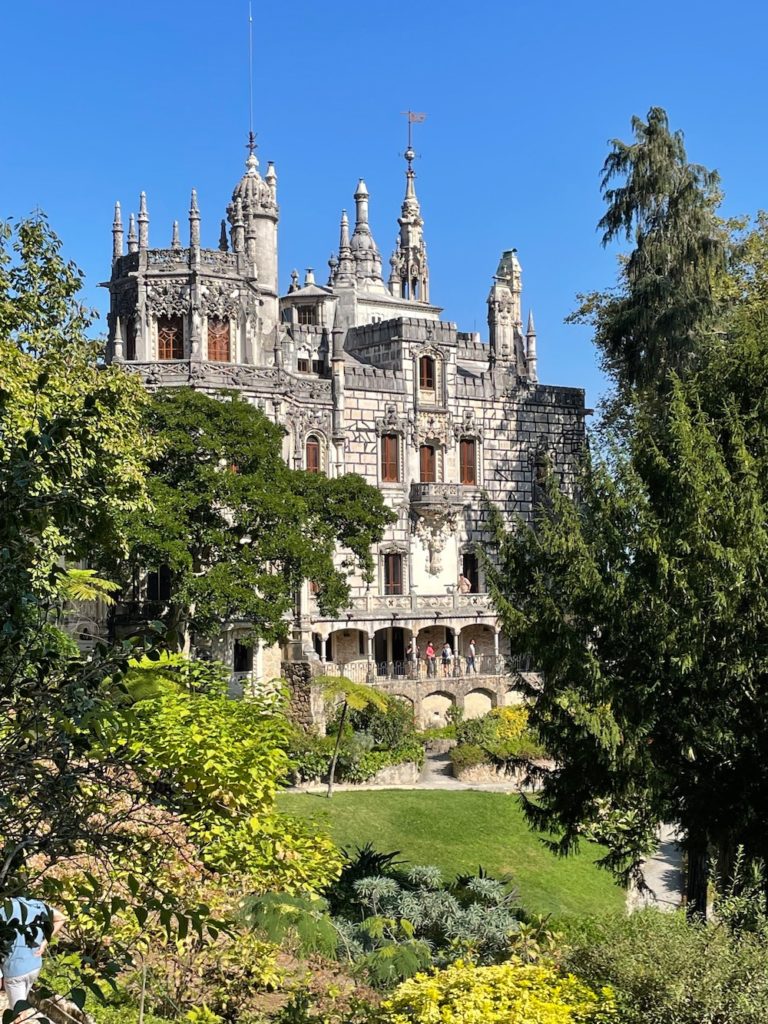
Located about 30 minutes from Lisbon, Sintra is a magical fairy tale kind of place with enchanting castles and gardens. Unlike in fairy tale locations, however, it’s packed with tourists, particularly in the summer, and has about seven parking spots.
My #1 tip for visiting Sintra is to have a plan. You can’t just hop in a rental car and drive up to Sintra for the day. Many visitors opt to take a bus or hire a tour guide.
I’m a big fan of the Facebook group, Travel Portugal, where you can get tips and suggestions on making the most of your visit to Sintra. And definitely buy your tickets for the castles online in advance to save time in line.
Our private guide, Eddie Nobre of Seagull Tours, was scheduled to pick us up at our hotel at 9:00. We had been in Portugal several days by then and did not set an alarm as we are early risers. Big mistake! Chris woke up at 8:45 and asked, “When is our guide picking us up?” Note to self: Always set an alarm when you have an event scheduled in the morning.
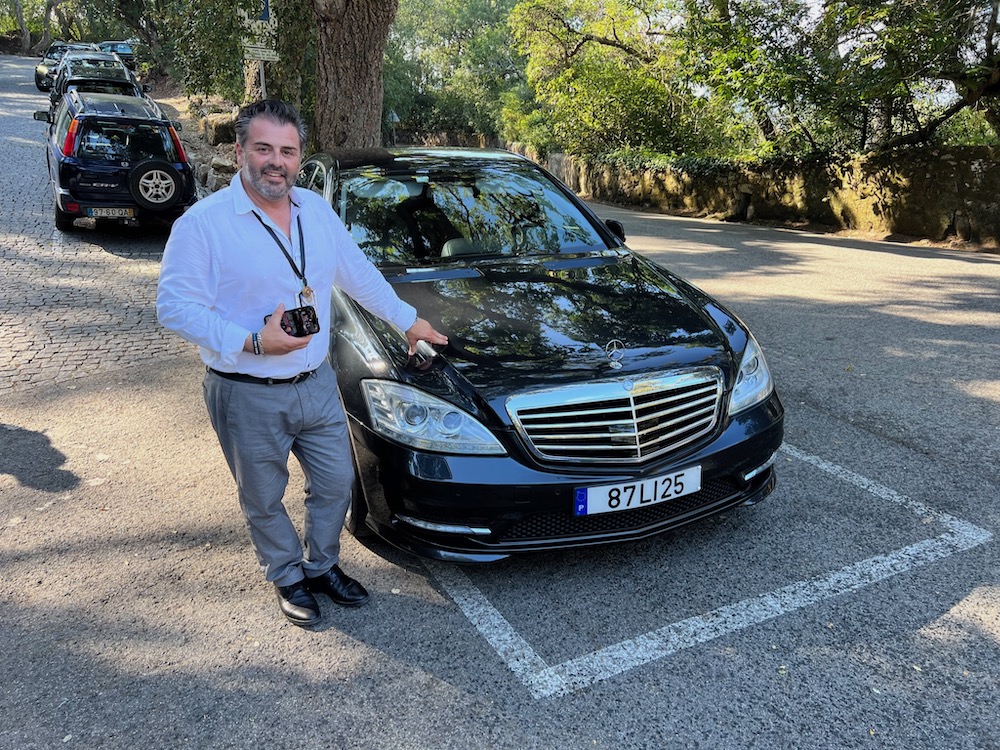
Once we scrambled to get dressed, we met Eddie, who took us to Sintra and a few places in Cascais, sharing his wealth of inside knowledge and comical commentary.
While the multi-colored Pena Palace is the top destination for visitors to Sintra, I had seen it before and Chris didn’t care, so due to the huge crowds of visitors, we skipped it and instead went to two other gorgeous palaces instead.
Built in the early 1900s, the five-story home with a gothic façade at Regaleira Palace & Gardens is interesting to stroll through, although you can only visit the first floor. The main attraction here is the spectacular gardens, which roam over nine acres and include towers, fountains and grottos with curving, sloped paths to explore it all.
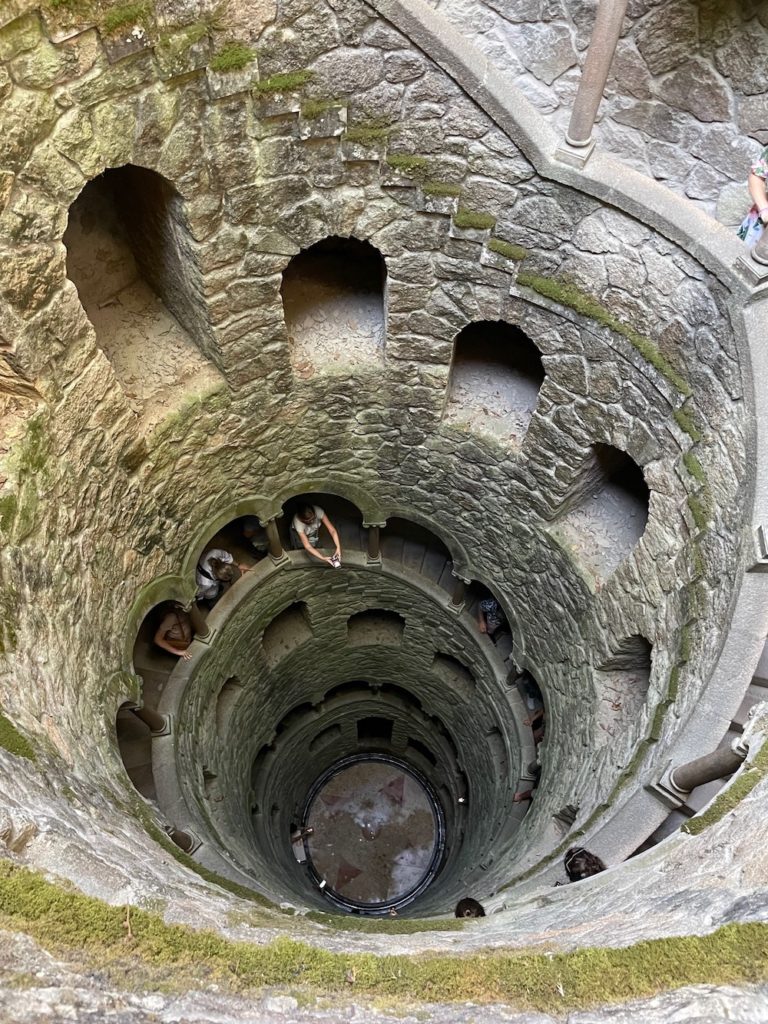
The most fascinating place to visit is the Initiation Well where we walked down the nine-level spiral ramp into the ground. It is said that Templar Knights underwent initiation here by walking down blindfolded into a labyrinth and had to find their way back up by walking towards the light. If they made it, they were initiated into the brotherhood. It is also believed that the nine spirals reference the nine circles on hell in Dante’s Divine Comedy.
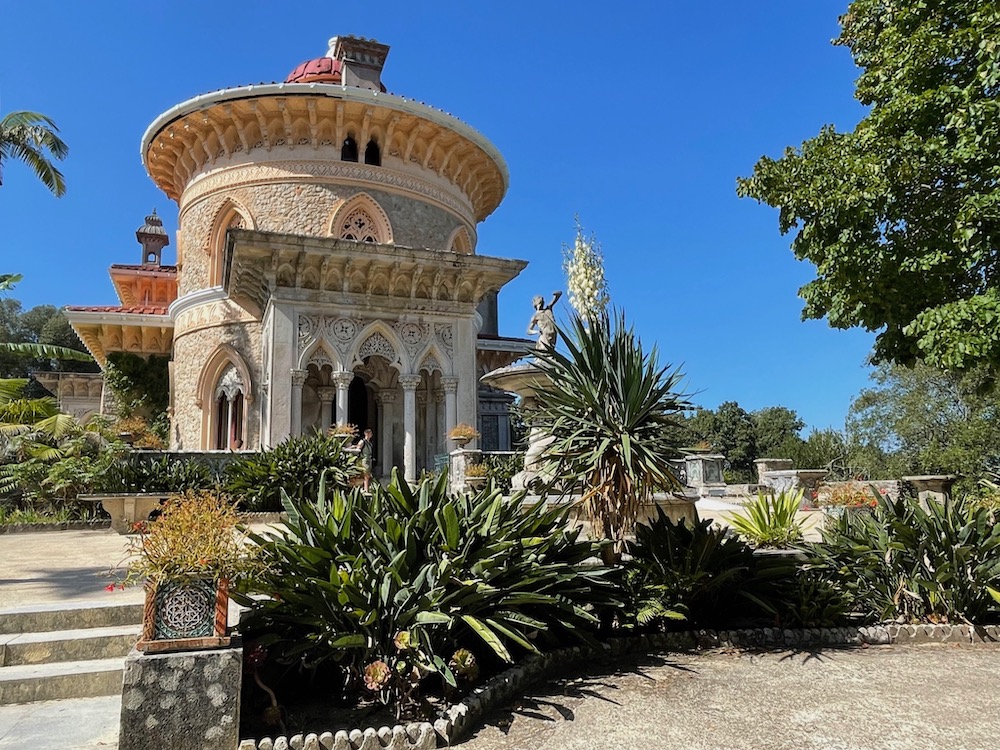
We also visited Monserrate Palace, which was built in 1863 as a summer home for Sir Francis Cook. My favorite thing about this small palace was the beautiful tile work throughout the home. The lush gardens are spectacular as well and include fountains, springs, grottoes and a lake along with several rare species of plants. The ruins of the hauntingly beautiful chapel are overrun by vegetation and share the sun with a huge Australian rubber tree.
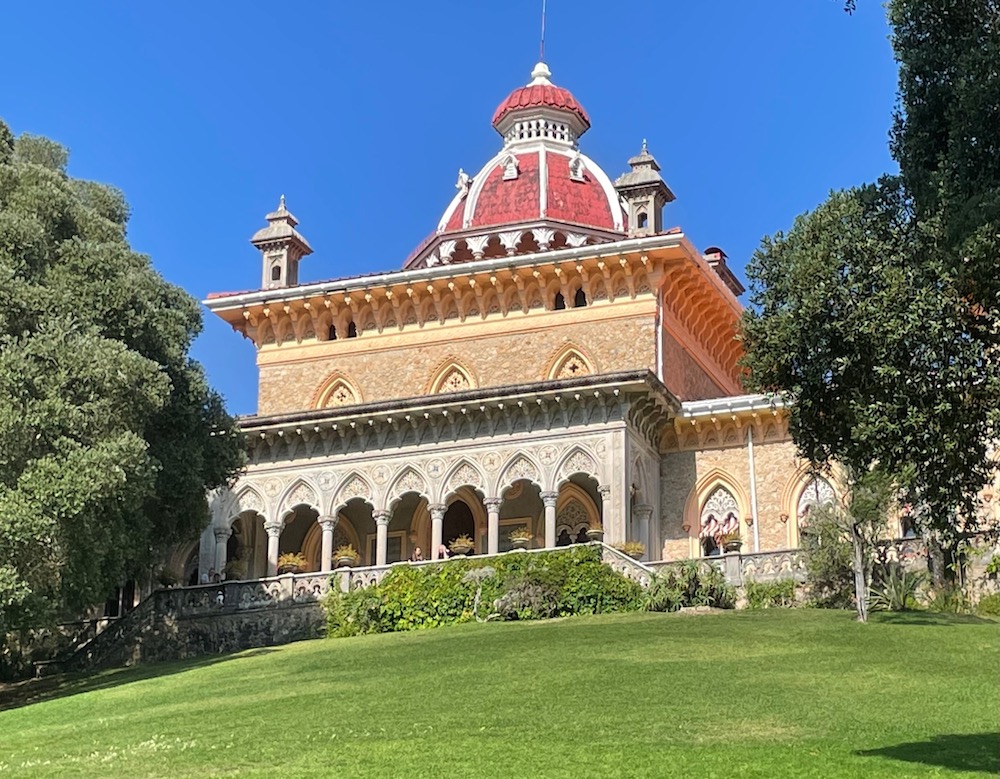
Eddie suggested an alternative to lunch in Sintra and took us to the Mercado Da Vila, the indoor farmers market building in Cascais that also houses bars and restaurants. On Wednesdays and Saturdays, there’s a large flea market in the parking lot.
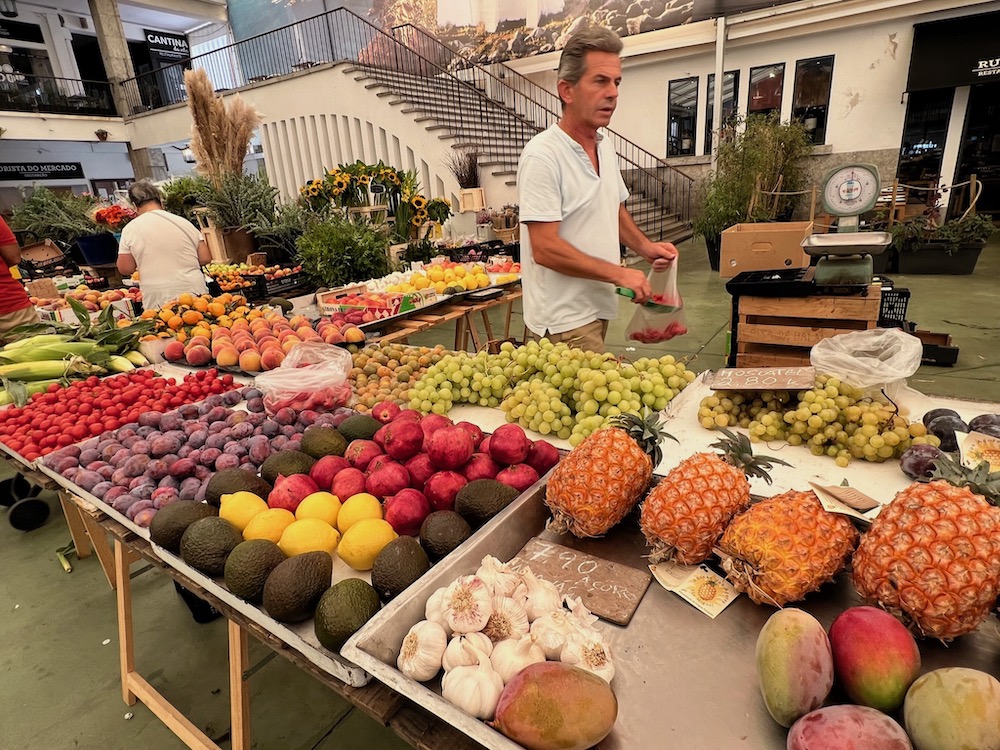
Our first stop was the fish market where Chris happily downed oysters, followed by lunch at Marisco inside Mercado Da Vila, where we dined on more seafood dishes, including mussels, clams, and of course, more cod.
After our discussion about Black Pig gin, which is made in Alentejo, Portugal, Eddie took us to the supermarket in Cascais where we could get a bottle. We love gin and I particularly loved the design of the bottle that features blue-and-white tiles. With a black pig, of course.
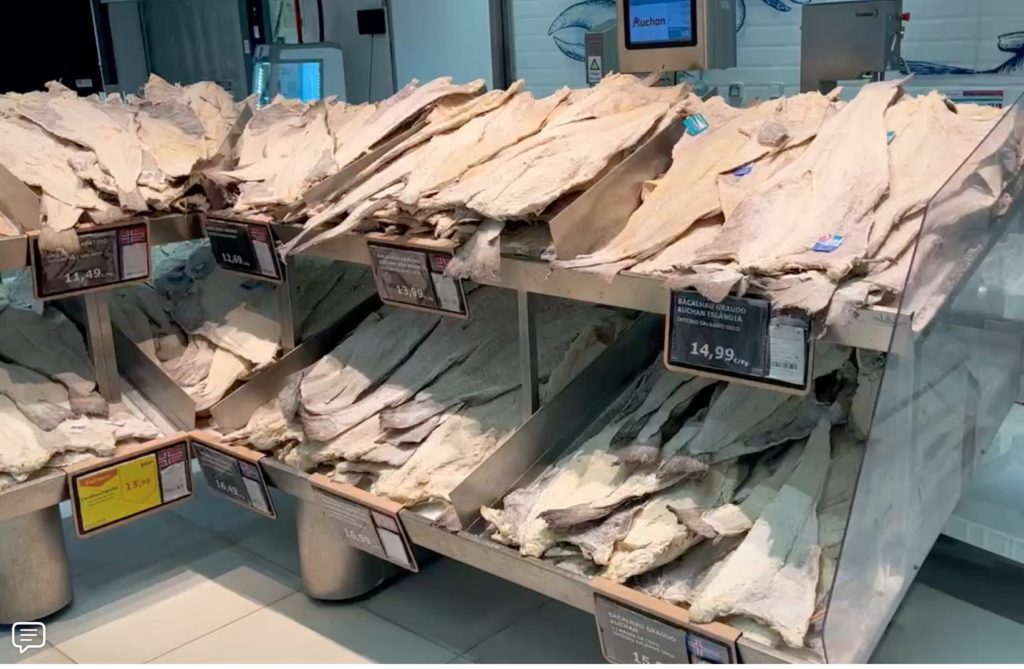
The grocery store had a large section just for the dried salted cod the Portuguese love, huge flat slabs that they take home and leave on the counter. When they want to cook it, they soak it in water for at least 24 hours, changing it several times to reduce the saltiness. That cod and the unrefrigerated eggs piled in towers at the end of an aisle were the two most unusual things we saw in grocery stores in Portugal. The best things we saw were the rows and rows of wines for less than 10 euros a bottle.
After touring for days, we needed a night in, so opted to heat up our leftover paella in our hotel room, which had a fridge and a stovetop. See more on our hotel below.
Day 3: Cabo da Roca, hiking, wine tasting
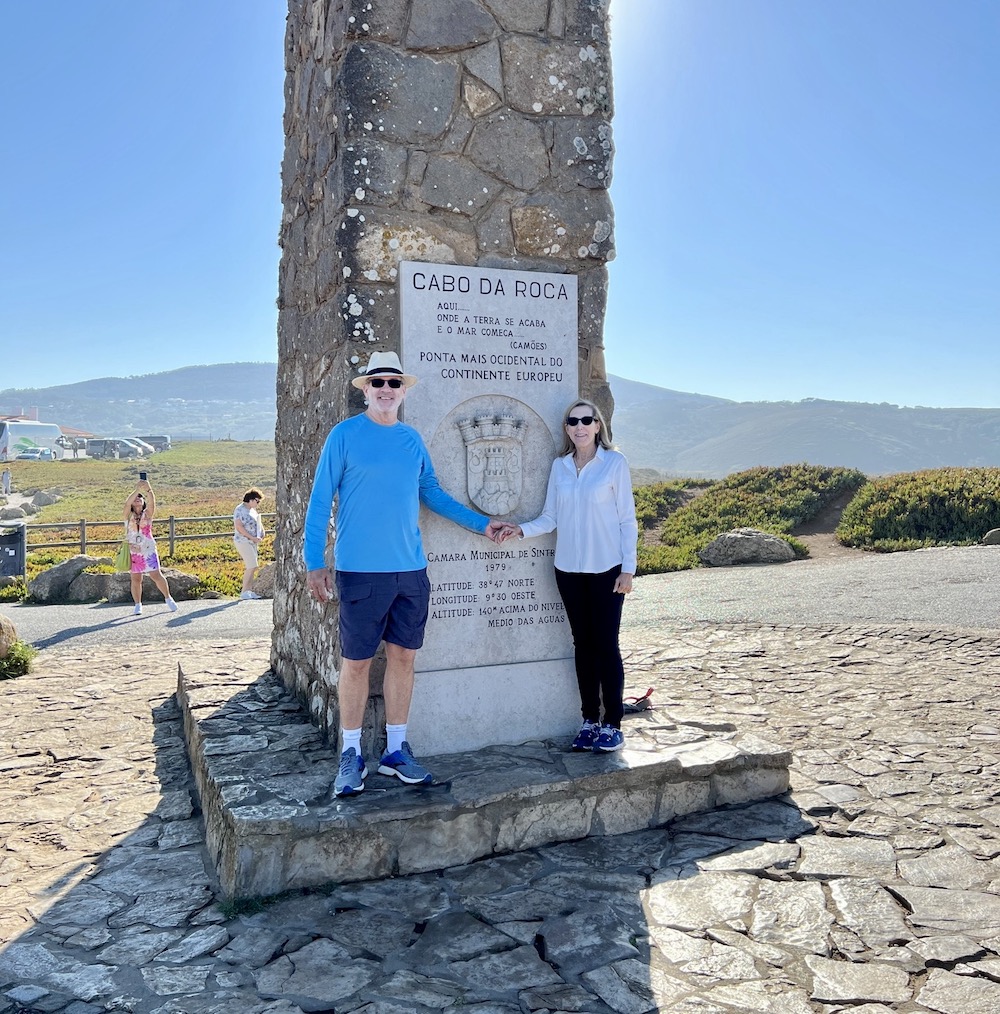
Our guide for day 3 was Teresa Oliveira with Walk Hike Portugal. She and her husband, Francisco Mendonça, started the company, which leads day and multi-day hikes all over Portugal.
“We don’t really have a culture of hiking in Portugal,” she told us. That really surprised us, given how beautiful the country is and how many hiking trails there are. Perhaps it’s one of those things visitors do, but not locals?
Our first stop was Cabo da Roca, famous for being the most western point of continental Europe. Here we encountered one of a few places in Portugal where you have to pay to use the restroom. Here’s a good place to point out that many places in Portugal don’t accept credit cards, so always have some euros with you.
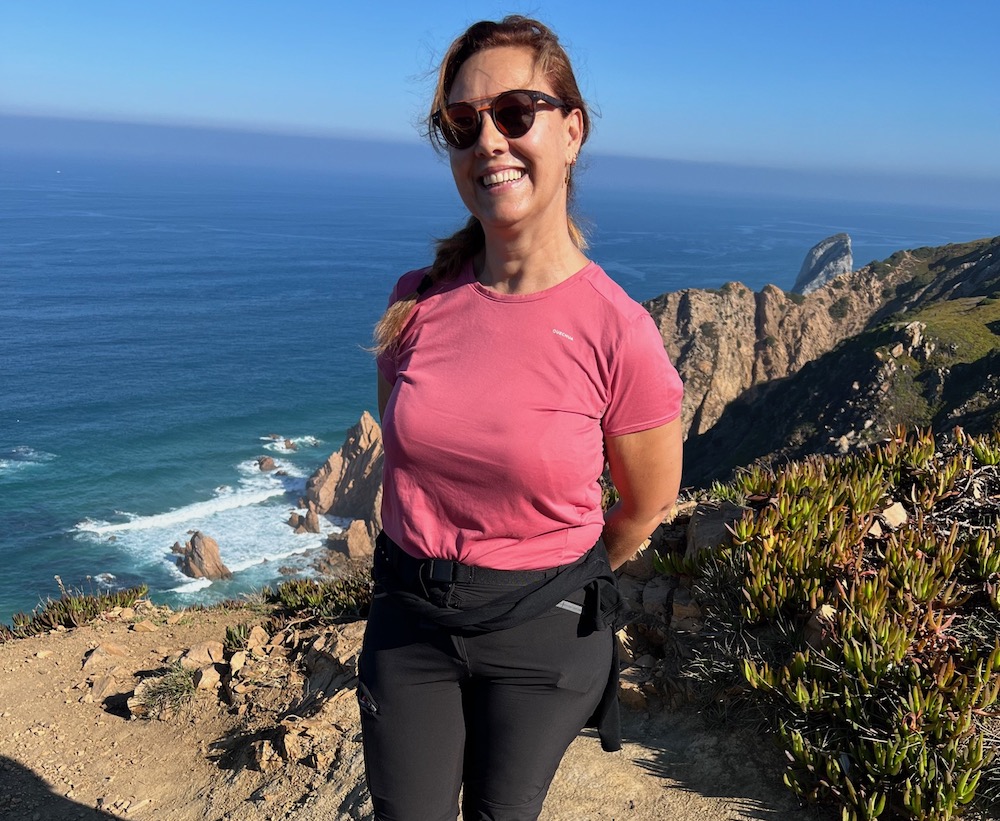
We walked around the area a bit, wandering the paths over the towering cliffs before heading out on a longer hike along narrow paths through the grass. It was a gorgeous sunny day and the scenery is just stunning.
As we were hiking along the cliffs we stopped and Teresa pointed ahead where there was a steep path she used to take down to a secluded beach. She said a storm had washed a lot of it away and it was no longer safe. As we were talking a young man in flip-flops passed by, overhearing us.
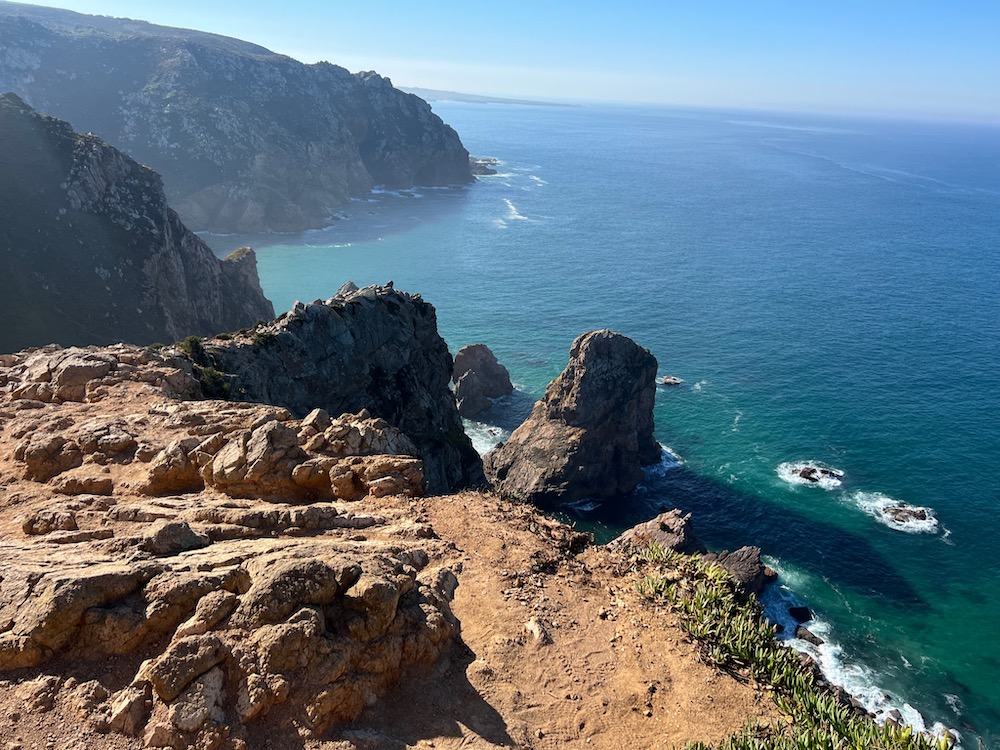
“I went down there yesterday and I’m going there now,” he said, his bleached blond hair blowing in the strong wind. Teresa advised him it wasn’t safe. “Well, it seems like a good day to die,” he said cheerily, then went on his way. I thought it was a good day to keep hiking and eat more seafood.
Teresa took us to another hike, way up a hill to an abandoned monastery and ancient small church. “Monasteries and military buildings get the best views,” she said. After climbing the hill and taking in the surrounding view that included Lisbon and Cascais, she led us down to a small, abandoned church that she said most people overlook.
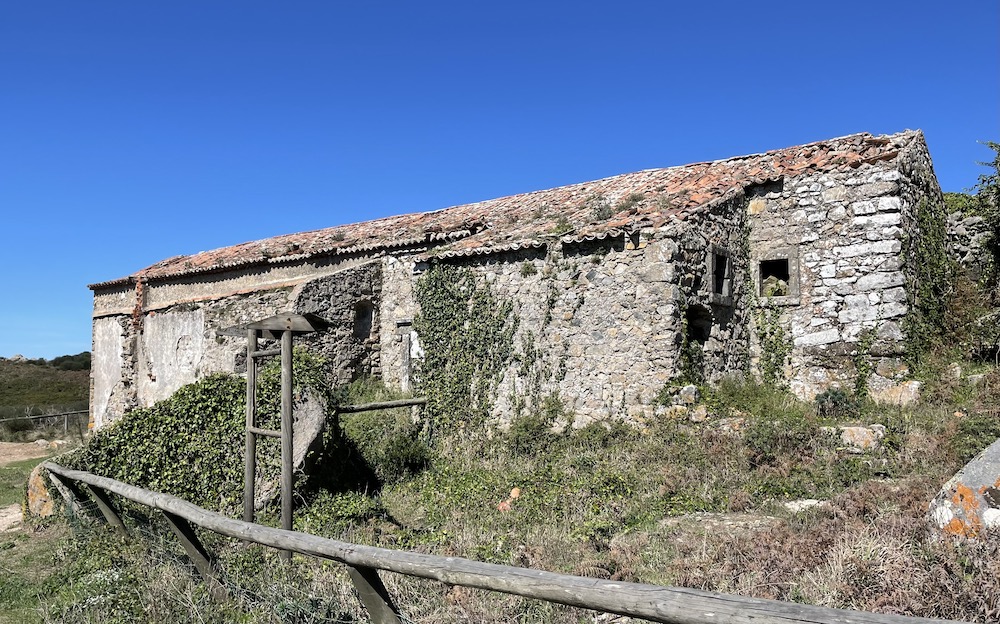
“This church dates back to the 12th century,” she told us. “It had a black Madonna, one of three in Europe.”
After viewing the chapel, we hiked through the woods. “We also do night hikes in the summer,” Teresa told us. “The fireflies are amazing!” Another item added to the bucket list.
Our next stop was Adraga Beach, one of the most famous beaches in the area, known for its large sandy area and huge rock formations, including a giant arch at one end of the beach. We had a large, leisurely lunch at Restaurante da Adraga, a fourth-generation family restaurant right on the beach.
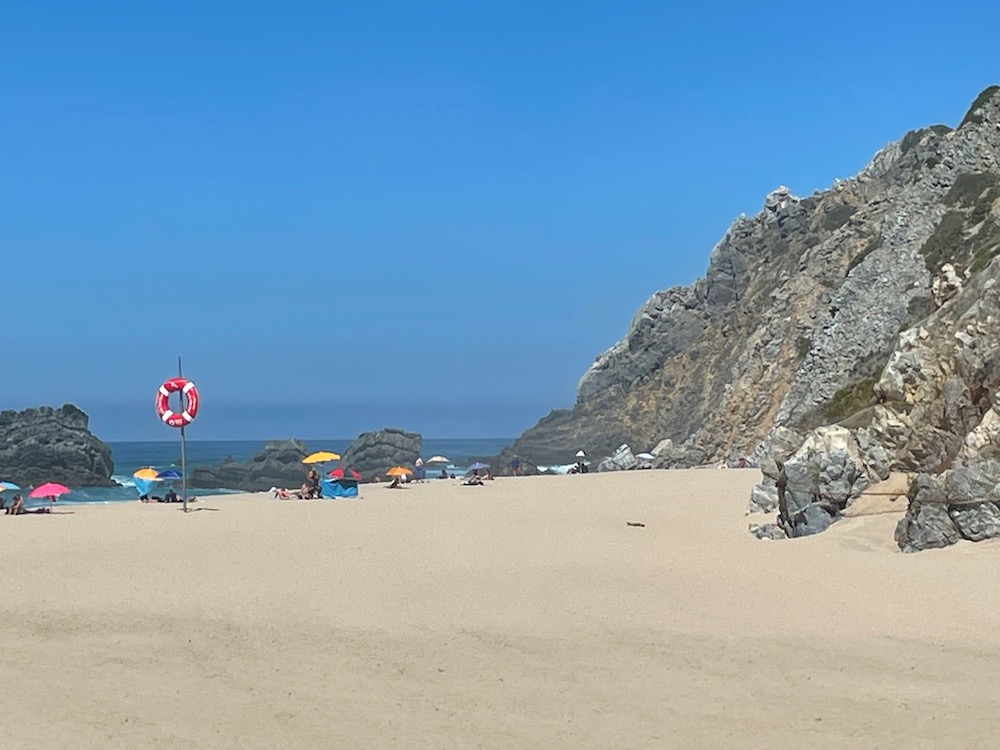
You can pick out your own fish at the front of the restaurant and you pay by the weight of the fish. Teresa picked out a lovely sea bass for us to share. Delicious.
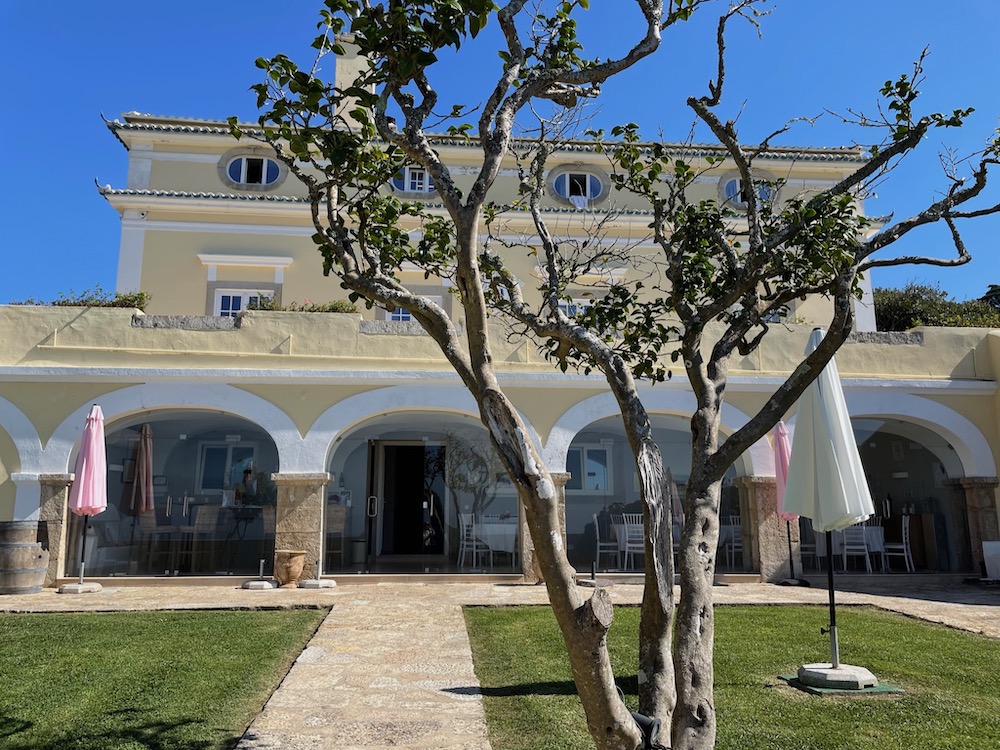
After lunch we headed to a wine tasting at Casal de Santa Maria, founded by Baron Bodo von Bruemmer, a retired banker who bought the estate, built in 1720, and later started producing wine there when he was 96 years old.
Visitors can take a two-hour tour to learn more of the fascinating history and taste several of the award-winning wines. The estate produces about 80,000 bottles of wine a year.
Day 4: Downtown Cascais, Mar do Inferno
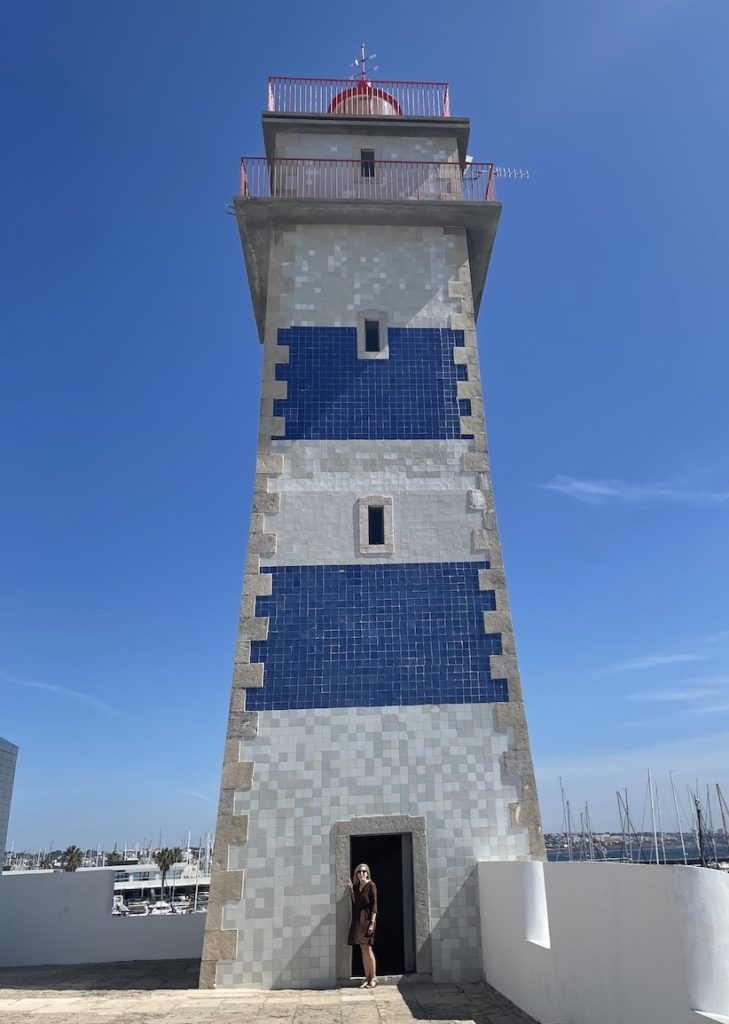
When we planned our itinerary with three nights in Cascais, I wondered if that was too long. As we packed our bags on that last morning, I realized we could have spent several more days here, lounging on the beaches, visiting museums and spending more time strolling through the Parque Marechal Carmona.
Ines helped us make the most of our last morning, showing me more of the city as we strolled through the narrow cobbled streets of the historic downtown area, where giant cascades of flowers flowed over balconies.
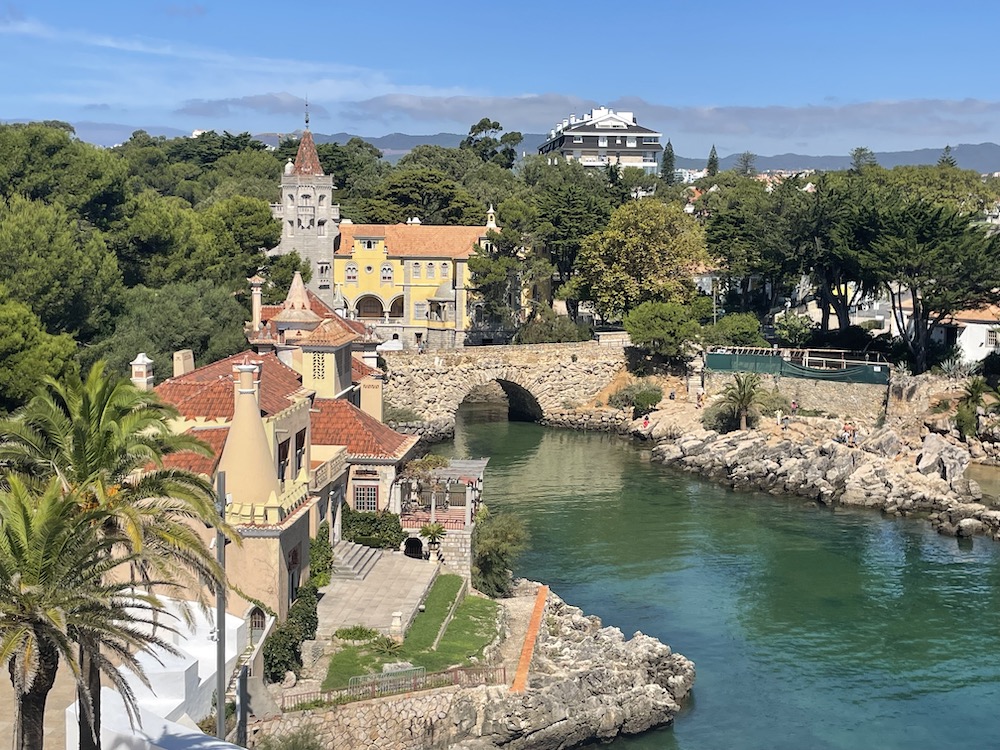
We made a stop in front of one unassuming house, which she told me is where the president of Portugal lives. Known as the “president of selfies” for his willingness to be photographed with anyone who asks, Marcelo Rebelo de Sousa chose to stay in his home in Cascais rather than Palácio de Belém, which is the official residence of the President of Portugal.
I was intrigued by the square blue-and-white lighthouse and Ines told me the lighthouses are square in Portugal to protect them during earthquakes. If you spend any time in Portugal you will learn there was a devastating earthquake in 1755, which occurred on All Saint’s Day and killed around 70,000 people in Portugal, Spain and Morocco.
It is estimated the earthquake was close to a 9 on the Richter scale, one of the most powerful earthquakes in history.
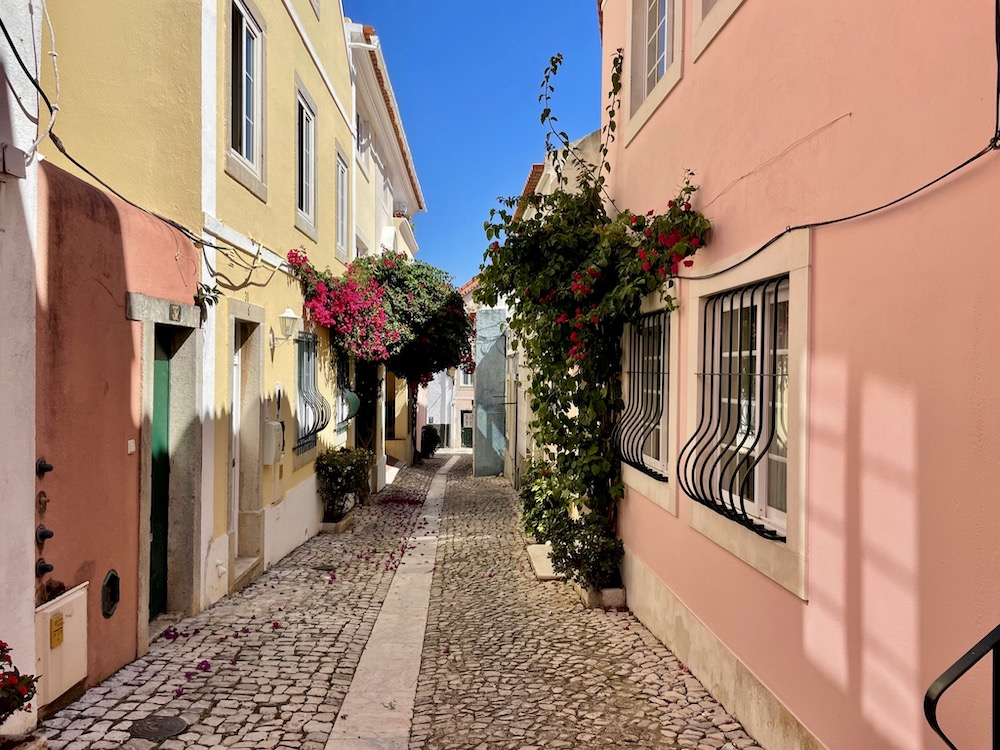
Lunch the last day was a highlight. We dined at Mar de Inferno, located right on the water. The name means hell’s mouth named after the chasm nearby.
I opted for a delicious cod dish, which of course, came with boiled potatoes – seemingly a requirement for a meal in this country.
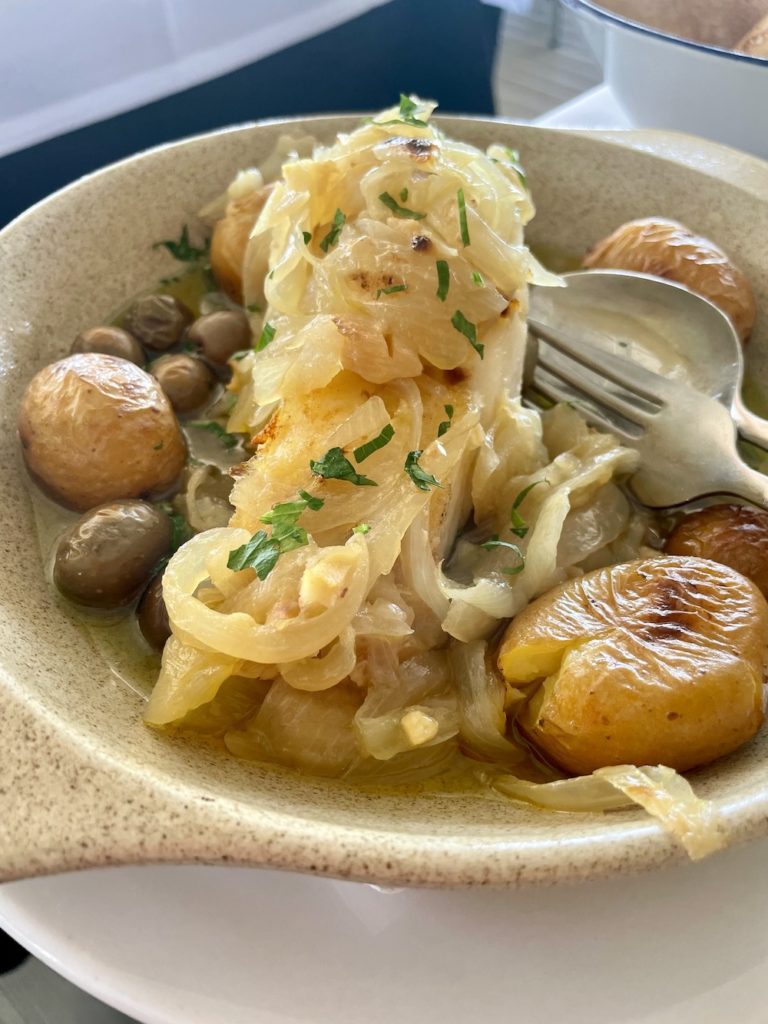
I adapted amazingly well to the leisurely lunch style of the Portuguese. They enjoy their largest meal in the middle of the day, often with a glass of wine, and end it with a small cup of coffee, which usually costs under 1 euro.
We found so many things to love about the Portuguese culture – the more laidback lifestyle and its emphasis on food and drink. And of course, its affordability. During our stay the exchange rate was about 1:1, making an already affordable country even more so.
Where to Stay in Cascais
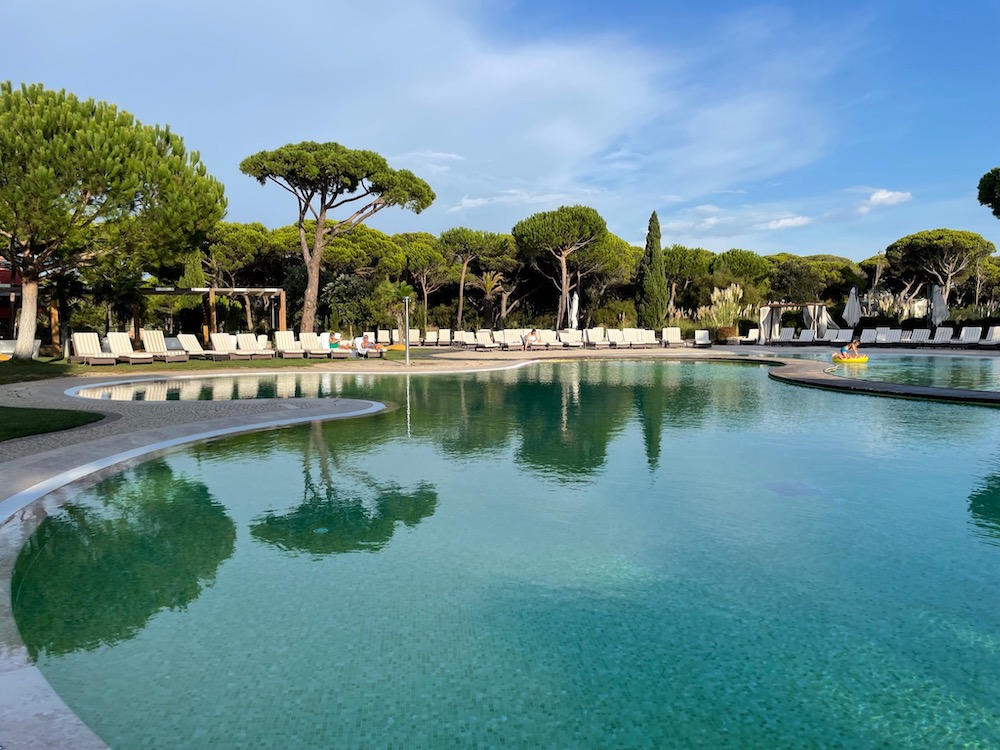
We stayed in the lovely Sheraton Cascais Resort where there is plenty to do for guests when they aren’t exploring. Located in one of the nicest neighborhoods in Cascais, there’s a playground, two outdoor pools, one with a bar, a gym and bicycles available for rent. There’s a shuttle service into town and to two beaches.
I enjoyed the Experience Cascais treatment, a fantastic 80-minute massage with sand and white clay. I highly recommend Marta as a therapist.
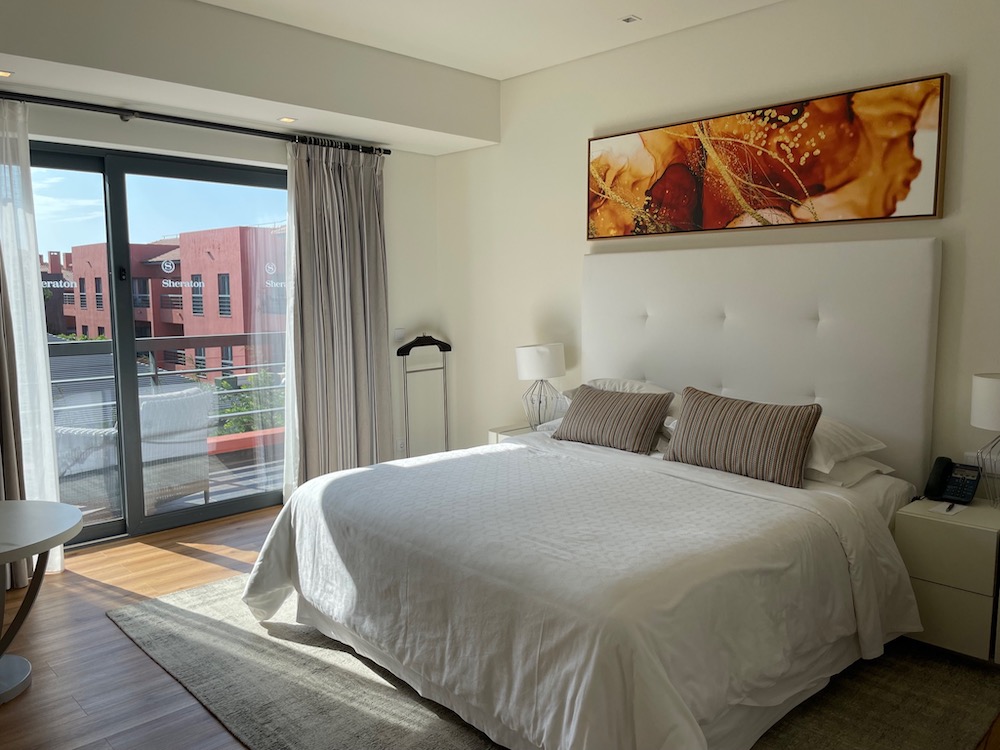
The resort has 156 rooms with balconies. We were surprised to find a stovetop, which came in handy for heating up our leftover paella one night when we really needed to have a night in.
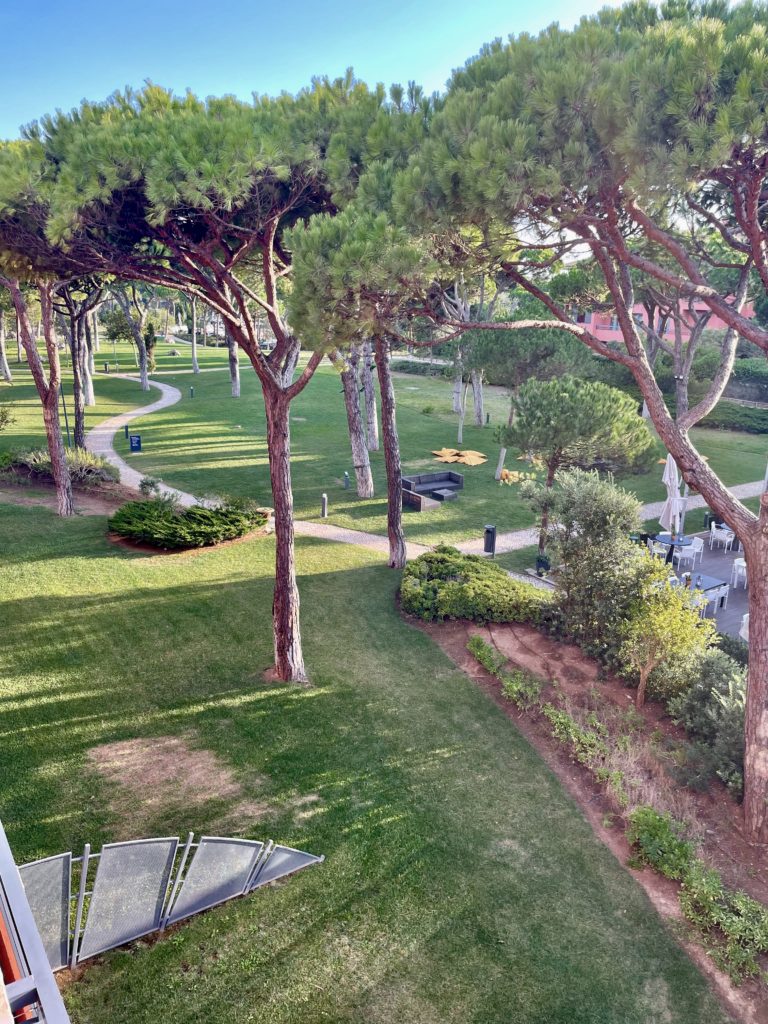
The breakfast buffet at Glass Terrace was delicious, one of the most lavish I’ve seen, and even included a make-your-own mimosa section. It has a beautiful terrace area so you can dine outdoors. We had dinner there one night and I confess after eating seafood just about every meal, I ordered the chicken and it tasted fantastic. Well, I couldn’t go an entire meal without seafood – I ordered the tuna and avocado appetizer and it was divine.
The resort has a Japanese restaurant, Yakuza, that also has an outdoor seating area.
For more information on Cascais, visit www.visitcascais.com/en
– Photos and text by Jan Schroder, Editor-in-chief

